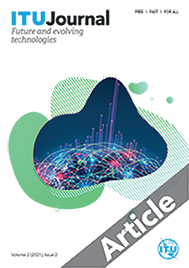|
Computer-aided design for analog wireless fronthaul of B5G cellular communication systems
|
Authors: Mikhail E. Belkin, Vladislav Golovin, Yuriy Tyschuk, Alexander S. Sigov
Status: Final
Date of publication: 14 June 2021
Published in: ITU Journal on Future and Evolving Technologies, Volume 2 (2021), Issue 2, Pages 35-46
Article DOI : https://doi.org/10.52953/UZPN8246
|
 | Abstract:
Specialties of an analog fronthaul based on Radio-over-Fiber architecture and key principles of exploiting microwave photonics technology when designing a millimeter-wave Radio Unit (RU) are reviewed and discussed. To clarify, in this paper we perform a comparative simulation for a specific example of developing an obligatory RU's node as a reference oscillator with an output radio frequency (RF) of more than 100 GHz, which is typically implemented by means of a circuit that includes a relatively low-frequency RF oscillator followed by a high-order frequency multiplier. Following the principles and approaches outlined, we propose and describe two alternative schemes for implementing a frequency multiplier from 4.25 to 102 GHz using microwave-electronics or microwave-photonics approach. Further, using Cadence AWRDE software with an additional introduction of the previously proposed models of optoelectronic devices, their main characteristics are considered. To ensure the practical orientation of the model experiments, the parameters of each of the models used are selected based on the specifications of commercially available discrete components. |
|
Keywords: Analog wireless fronthaul, beyond 5G telecommunication system, microwave photonics, modeling, simulation experiment
Rights: © International Telecommunication Union, available under the CC BY-NC-ND 3.0 IGO license.
|
|
| ITEM DETAIL | ARTICLE | PRICE | |
|---|
ENGLISH  Full article (PDF)
Full article (PDF) |
|
| 0
| Free of charge | DOWNLOAD |
|
|
| |